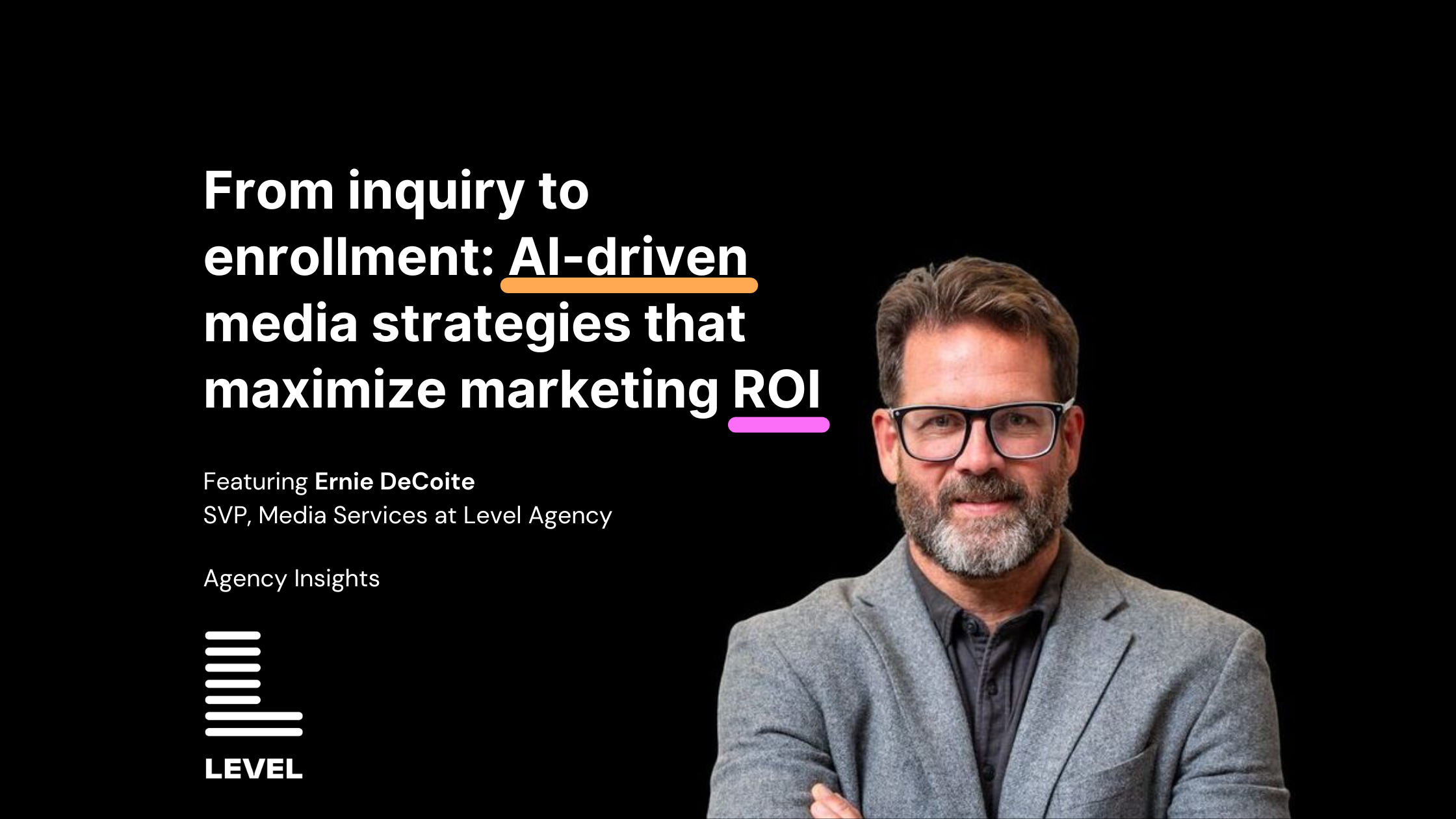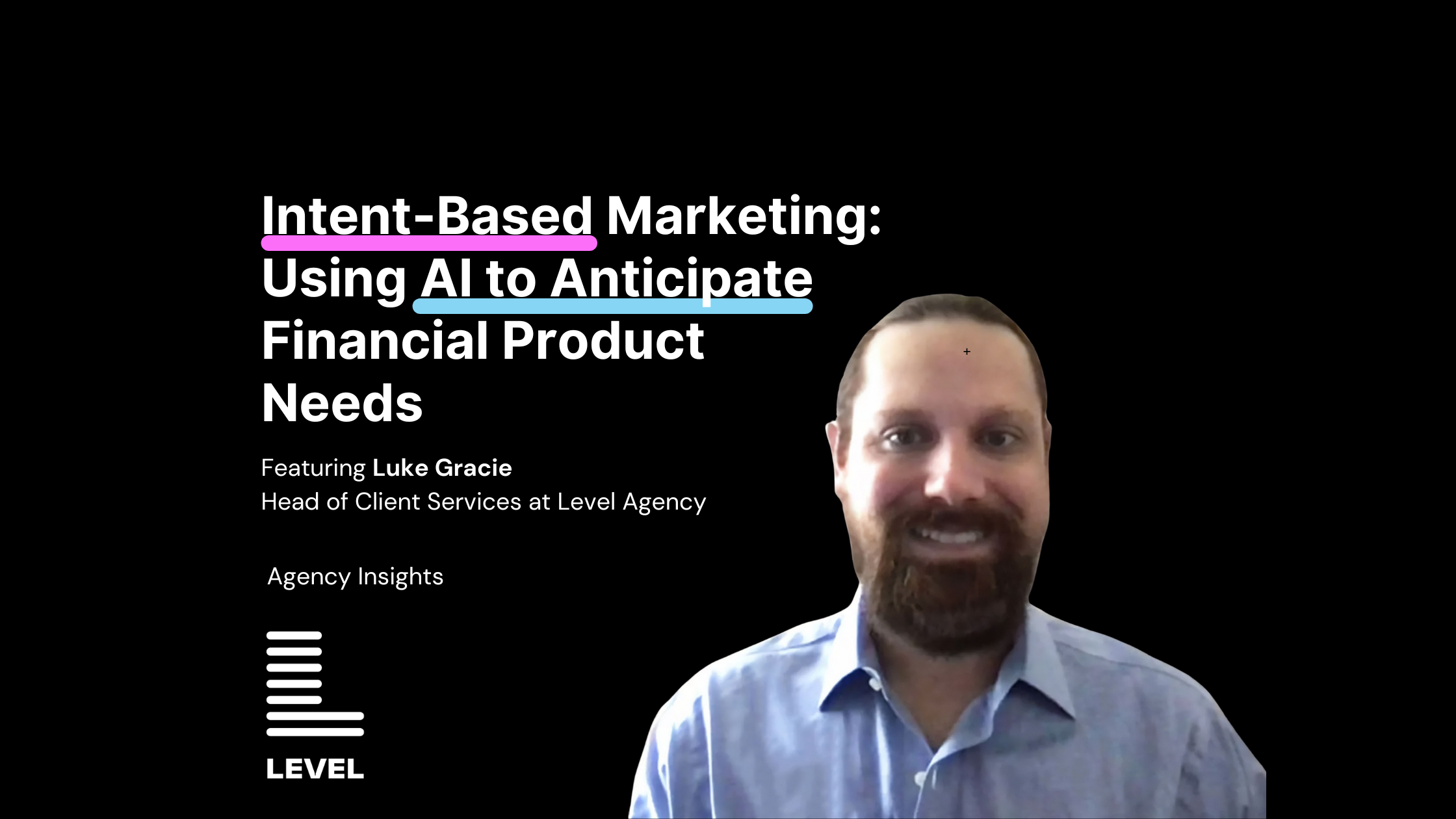Brand awareness is not just a buzzword—it’s a crucial strategy that can drive measurable outcomes such as qualified leads, more customers or students, and ultimately increased revenue. However, measuring brand awareness impact can often seem like an impossible task. In this post, we tap into an awesome podcast conversation with Geoff Roebuck, Education Team Lead at Level, to demystify the key facets of brand awareness and how to effectively measure it.
We’ll clarify what brand awareness truly implies, debunk associated misconceptions, tackle concerns about investing in demand generation, and reveal actionable strategies for effectively measuring and implementing brand awareness tactics.
Understanding the Power of Brand Awareness in Higher Education Marketing:
In higher education marketing, brand awareness is about how well your target audience recognizes and connects with your brand and its offerings. It’s about establishing a mental footprint in the minds of potential students, highlighting how you can fulfill their needs and address their academic challenges. Although immediate enrollments may not directly result from it, brand awareness plants the seeds for long-term success by drawing attention and distinguishing your brand in an intensely competitive arena.
Overemphasis on Demand Capture Undermines Marketing Efforts:
Higher Education Marketers often become overly focused on demand capture, which zeroes in on individuals already exhibiting interest in their academic services. The reason? It’s the easiest to track and yields the most tangible outcome – leads. While demand capture is important, placing too much emphasis here neglects the pivotal role of brand awareness. Sole reliance on demand capture risks drying up the well of potential leads over time. Striking a balance between demand capture and demand generation is vital for maintaining a healthy sales funnel and driving marketing performance at scale.
Navigating the Challenge of Measuring Brand Awareness Impact:
Measuring the impact of brand awareness can present a significant challenge. Traditional metrics often struggle to encapsulate the enduring value and ripple effects of brand awareness campaigns. Here are some strategies to surmount these hurdles:
- Establish Clear Goals and Set Rational Expectations: Lay out clear, overarching goals linked to your brand awareness campaigns, such as an uptick in organic leads or brand searches. Keep expectations realistic and allocate sufficient time for the results to materialize.
- Monitor Secondary KPIs: Though the ultimate victory lies in lead volume and conversions, tracking secondary KPIs can offer early signs of your brand awareness campaign’s trajectory. Metrics like impression volume, engagement rates, click-through rates, and campaign-specific behavioral indicators can be insightful.
- Implement Controlled Testing: Conduct tests based on geographic or temporal parameters to compare your brand awareness results against control groups. This strategy provides a fair measurement of the incremental impact of your campaigns.
- Harness Advanced Measurement Techniques: Use analytics tools and services like IP matchbacks to correlate your advertising efforts with lead generation. Statistical modeling can also assist in assessing the effectiveness of your brand awareness initiatives.
Setting Realistic KPIs and Milestones for Measuring Demand Generation:
To accurately gauge the impact of your brand awareness and demand generation campaigns, it’s crucial to set realistic primary and secondary KPIs. Primary KPIs should align with the ultimate goals of lead generation and revenue, whereas secondary KPIs serve as early indicators of success. Consistency in these metrics from the beginning is important, and defining failure metrics can signal when strategic adjustments are necessary.
Effective Strategies for Measuring Demand Generation and Brand Awareness Impact:
To jumpstart your higher education marketing efforts, consider these brand awareness and demand generation strategies:
- Leverage YouTube Advertising: YouTube offers easy accessibility and cost-effective CPMs, integrating seamlessly with Google’s ecosystem for cross-channel measurement and assisted conversion tracking.
- Venture into Over-the-Top Television (OTT): Collaborate with OTT providers that offer comprehensive data systems and tracking capabilities. IP matchbacks and engagement metrics can provide valuable insights for optimization.
- Collect Self-Reported Data: Include questions in forms or during admissions interactions about how prospects heard about your institution. This qualitative data can offer valuable insights into the success of your brand awareness and demand generation campaigns.
In higher education marketing, brand awareness isn’t an optional extra—it’s the driving force that propels long-term success by creating recognition, recall, and familiarity among potential students. Measuring brand awareness impact may seem challenging, but by setting clear goals, tracking secondary KPIs, and conducting controlled tests, you can gain a clear understanding of its influence. By utilizing avenues like YouTube advertising and OTT, institutions can nurture brand awareness and enhance their demand generation efforts. As you navigate this path, align expectations, establish achievable KPIs, and consistently measure and tweak your campaigns to make the most of brand awareness and demand generation in higher education marketing.








